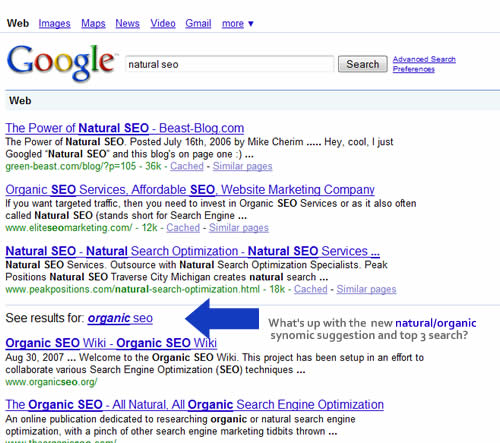Each page that you add to your site is an asset for SEO. Depending on your content development strategy and execution, you can harness the various cycles of link flow to maximize visibility in search engines.
The three cycles of content (fresh, normalized and authoritative) should be part of your SEO arsenal to exercise at will. This post provides the basis of how and why.
Content Considerations:
- Page freshness
- Global Normalization
- Authority
Considering the three phases of a page in your website (introduction, integration and authority / foundation), the trick is to manage the various cyclical stages of keyword development to impact a positive ascent for your primary, secondary and tertiary keywords.
Although we know that keyword research is the basis of a stable search engine optimization campaign, consider market analysis and keyword research the SEO blueprint that when cultivated can (a) chip away at competitive keyword verticals (b) stem into various semantically related mid-tail and long-tail phrases and (c) deliver bursts of predictable traffic based on the competitiveness of the co-occurrence of content presented.
Managing this process by measuring the impact of (1) conversions (2) bounce rate (3) loyalty / time spent on site and (4) pages consumed per visit – based on the tangential keyword the visitor arrived on allow you to determine which keywords are ideal for additional cultivation.
Execution:
- Mirroring on page architecture
- Developing internal link ratios (through co-occurrence)
- Deep link development
Mirroring on page architecture – Simply put, this means to (a) create a page with exact match representation of the keyword or phrase, i.e. if the keyword is affordable concert tickets, then the title would be:
Title: Affordable Concert Tickets
Description: ABC company offers affordable concert tickets, cheap last minute tickets and discount tickets for “alternative keyword”.
URL: domain.com/affordable-concert-tickets
H1 Tag: Affordable Concert Tickets
H2 Tag (optional): Discount Tickets, Cheap Tickets
On Page Content: 750 words at least 300 unique, try to bold one instance of the keyword and either use on page #anchors, or link to the page with the keyword or keyword(s) affordable, cheap, discount and the modifier tickets.
Layer Content: Add additional pages on the topic with stemmed related keyword variations to reinforce topical relevance.
Internal Links: Always ensure the same target page is selected for specific keyword variations (excel works fine to map out keywords and corresponding landing pages).
Then, rinse and repeat this unified tactic until any of all of your keywords appear in the top 20 results of the SERP’s on their own accord, then develop an off page internal link building plan to augment the most competitive keyword(s) landing page variations.
The rule of thumb is for any page you want to appear in the SERPs and maintain some type of prolonged buoyancy, 10 inbound links should suffice to (a) qualify that URL as a contender if augmented by internal links and (b) pass page rank and authority on the next update as a result of the deep links and extended internal linking.
Harvesting Legacy Content:
After 4-6 months, the pages you created have long since moved out of the fresh content factor, subsided, been assimilated and now can be leveraged as a pivotal foundation for trust to augment preferred content.
All pages may start at the same level (0), but do have an equal opportunity to evolve into bona fide power-house pages capable of capturing multiple rankings for keyword variations as ideal destinations for eager consumers executing corresponding search queries in search engines.
The SEO Tactic:
- Map out the keywords that need a boost in the SERPs.
- Use the site colon command site:yourwebsite.com keyword
- Find the first occurrence of the keyword (the higher the better in the body copy) then edit the text to link to your preferred landing page.
- Repeat this for the first 10, 20 or 30 occurrences per keyword.
- Measure results and continue to either (a) create fresh content to introduce into the cycle (b) build deep links to the preferred landing pages or (c) dig deeper into the 40, 50 and 60 keyword co-occurrence mark and use slight variations (to mix up anchors to the target page) to gain additional buoyancy from on page optimization / internal linking.










Hi Jeffrey,
I’ve been wondering about this for some time from your other posts so glad you brought it back up…
Using the site:yourwebsite.com keyword command, how do you do internal linking if Google suggests a number of pages they deem relevant, but the exact keyword you want to link from isn’t on the page? So if I was searching for site:yourwebsite.com large blue widgets, Google might suggest pages that have those words but not necessarily in that order. Do you edit the page so it does contain the exact phrase (from a reader perspective sometimes this doesn’t make sense though I’ve noticed), or does adding something at the end of the content such as “Further reading: large blue widgets(link)” work just as well? The thing is this wouldn’t be high up in the content.
I’d be really interested to hear your thoughts on this. Also, (of course it depends on competition) what sort of effect would this have linking from 30 internal pages for a keyword that’s in the ~200 range in Google in your experience?
Another thing I’m wondering about from this post is the use of #anchors. Would this mean something like…
URL: domain.com/affordable-concert-tickets
Anchors on the same(?) page: domain.com/affordable-concert-tickets#cheap, domain.com/affordable-concert-tickets#discount, etc, which then skip to sections of the same page?
What effect does this have from a SEO standpoint?
Thanks for the excellent post again Jeffrey, great reading.
Justin
Hi Justin:
Regarding the site: command for identifying pages. Google uses a fuzzy set algorithm to parse and determine which pages have an inkling of relevance. Hence, you would want to look for the bold words and see if the keywords are grouped with close proximity or loosely associated.
In either case, it has been deemed significant enough to appear for that keyword. If you use wordpress you can always use “automatic SEO links” or SEO Ultimate “which we intend to update with a more sophisticated internal linking module.
Consider it Wikipedia like by nature for keyword co-occurrence and linking. However the site: method still carries weight from the old school “SEO by hand” category for on page optimization. Also, editing the content is something that you can do to increase relevance for specific keywords to add additional relevance to pages you intend to garner rankings with.
Regarding the anchors, if you are using a canonical tag, you can consolidate the ranking factor for PageRank purposes to a single page, but it does count as an allinanchor count for the keyword. Consider it anchor text self referral but when coupled with anchor from other pages (specifically in the block text bulleted list) it sends a strong signal for relevance.
Also, contextual linking is in my opinion far more effective (the higher up in the body copy the better) for the keyword in question. We try to use the first 25-50 words max to link to the primary keyword to provide enough weight as far as significance.
If you are lacking content on the keyword in question, then create more pages and structure a drip-down tactic whereby you are creating 50 posts per quarter to chip away at a competitive keyword vertical.
Hope this helps…
Thank you Jeffrey. I’ll be going over my site next week and properly doing the internal linking. The site in question is built on drupal so i’ll have to do it the hard way, but I have several sites using WordPress so will be checking out your SEO Ultimate plugin next week too :)
Thanks again for taking the time to answer my questions, I appreciate it.
Justin
Sure thing Justin,
Thanks for visiting.